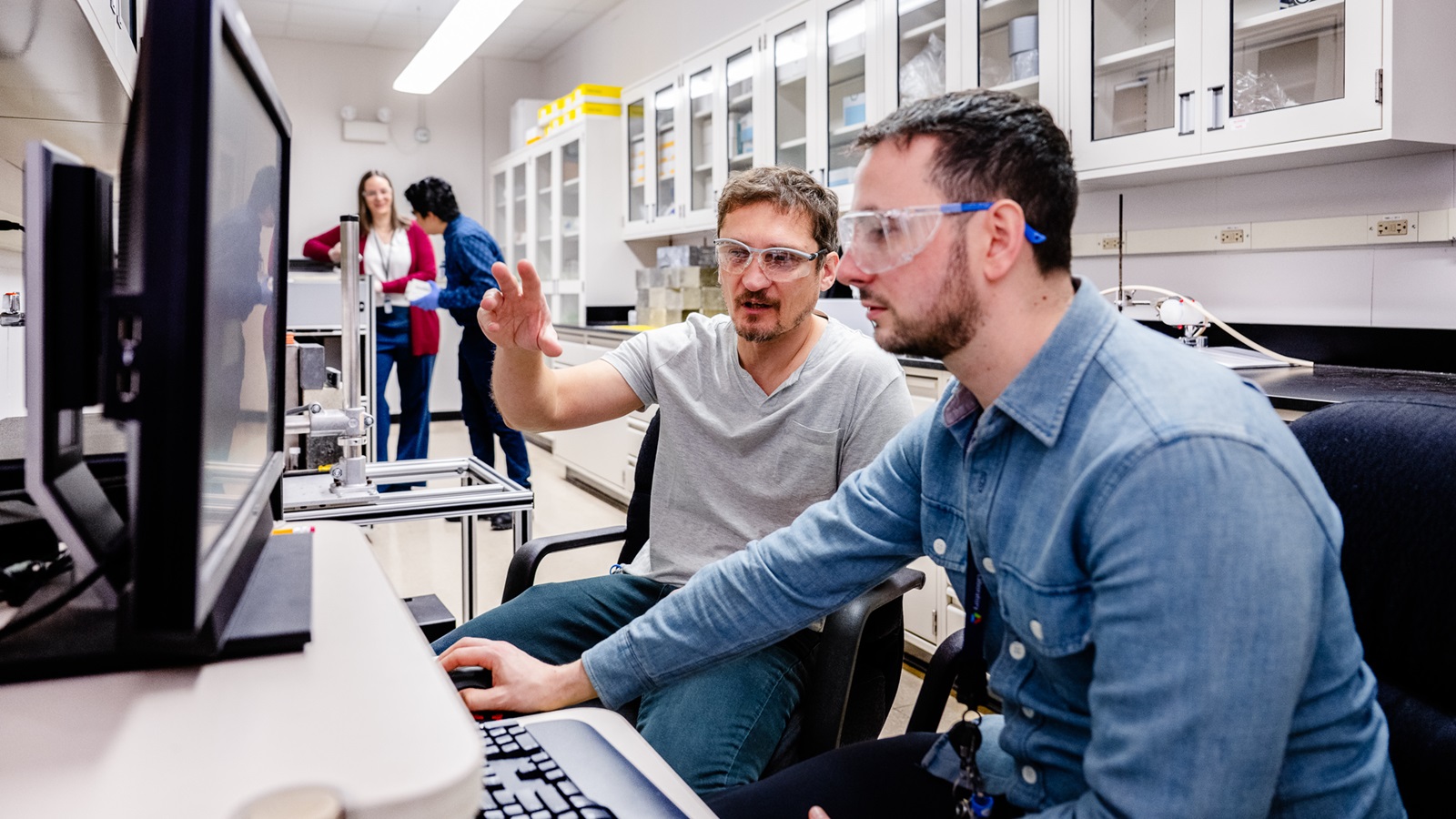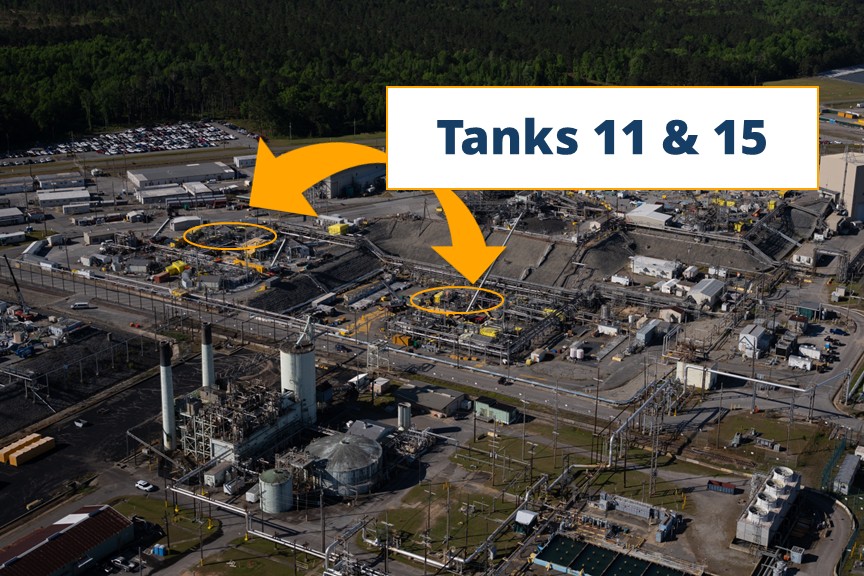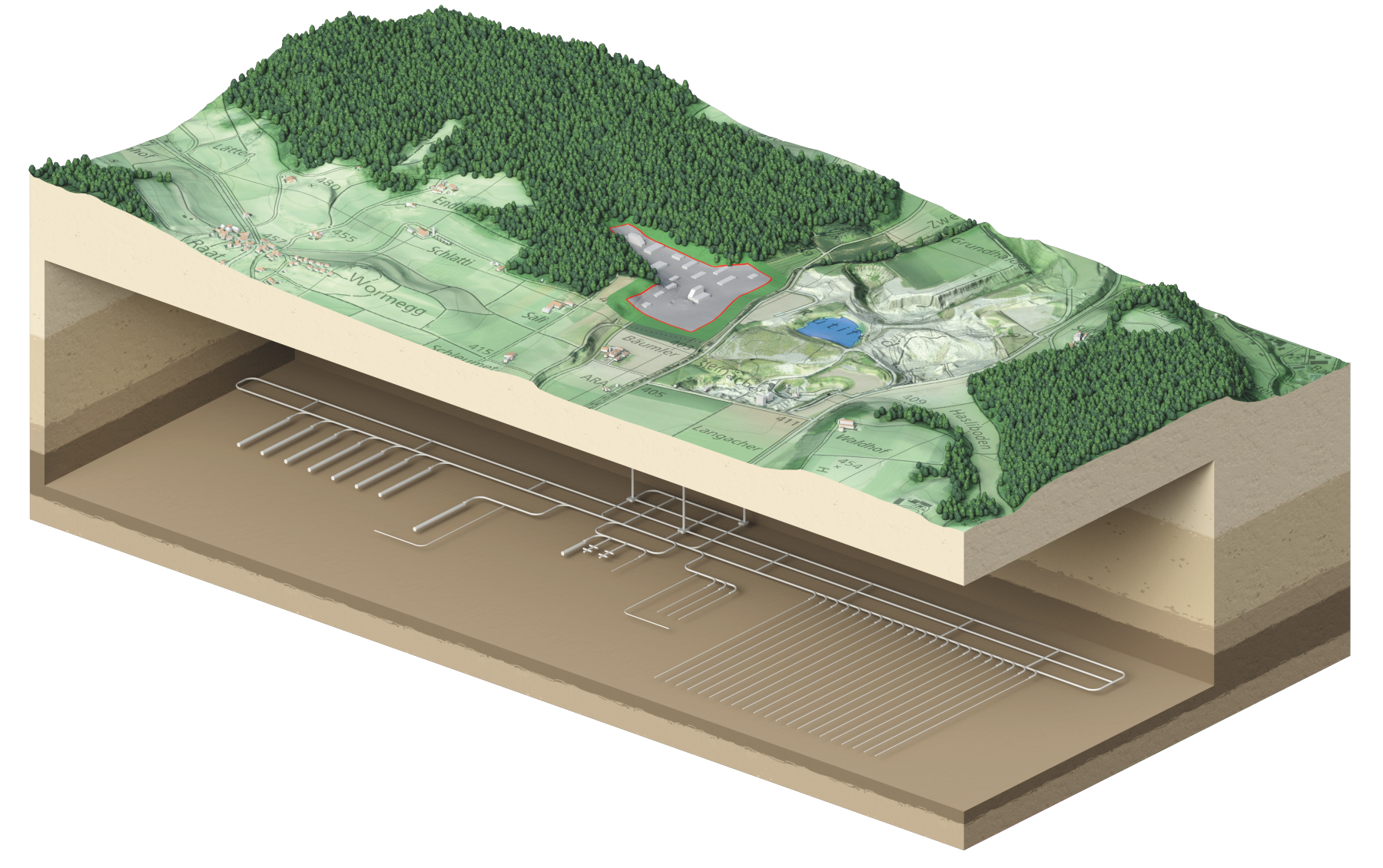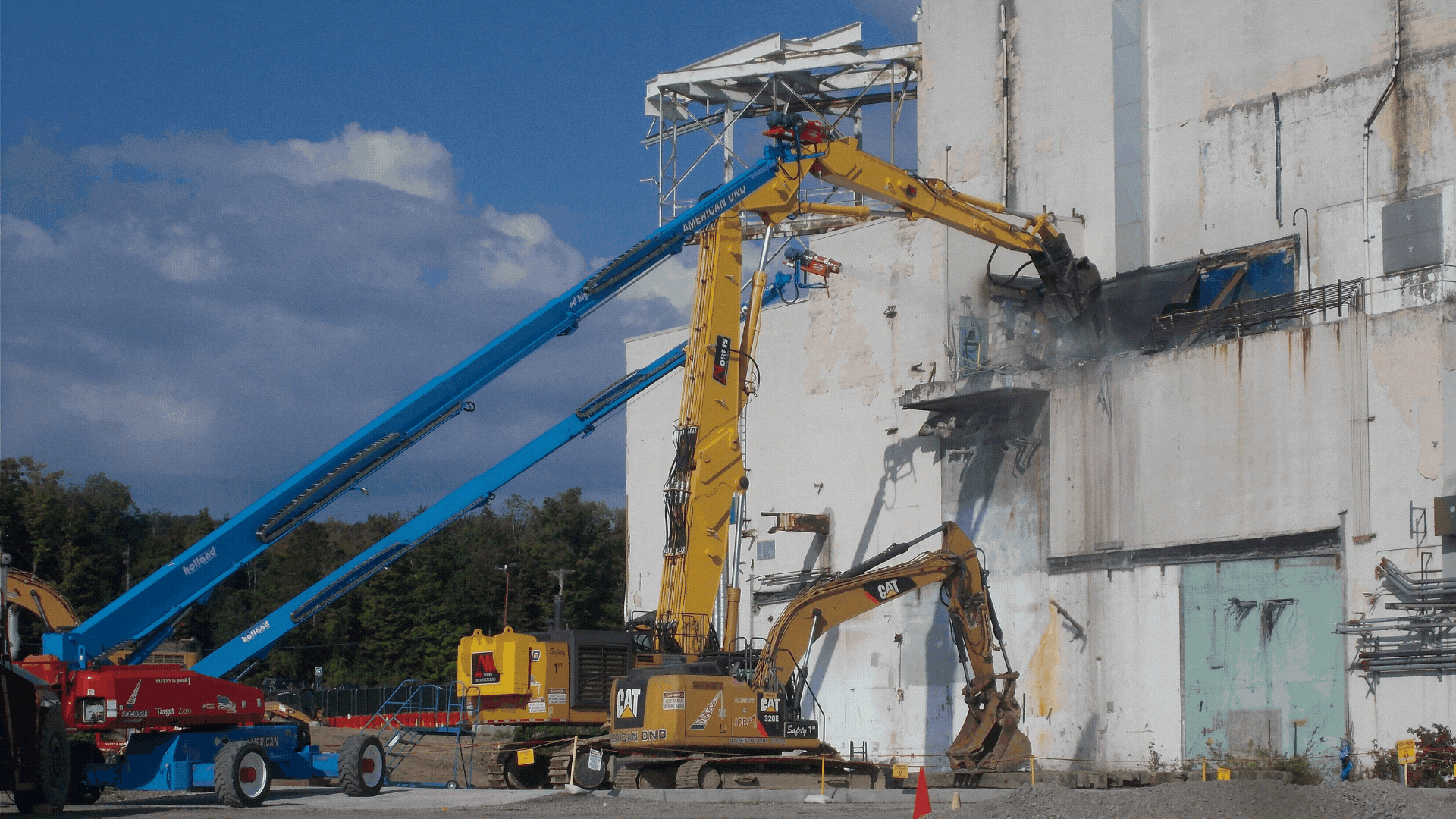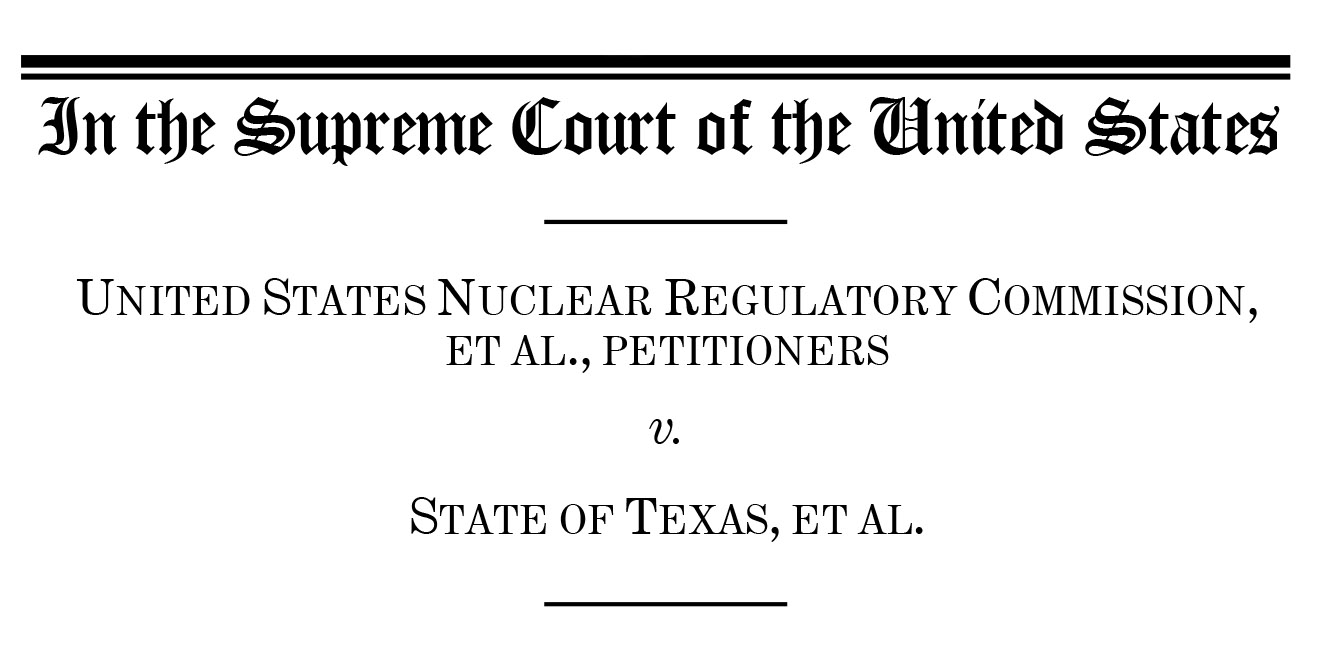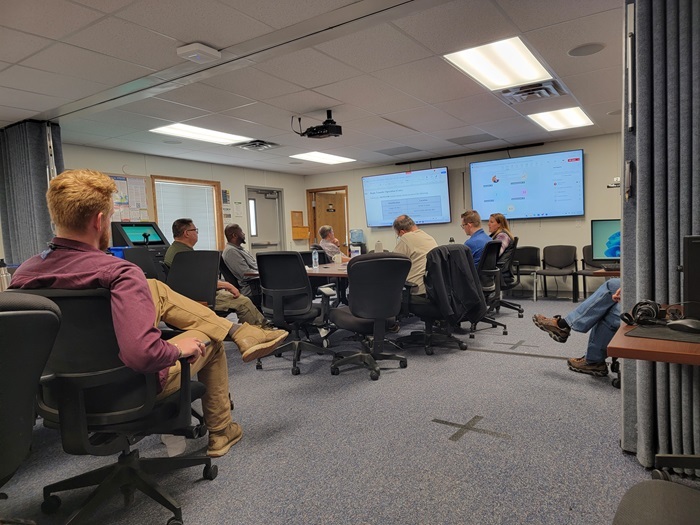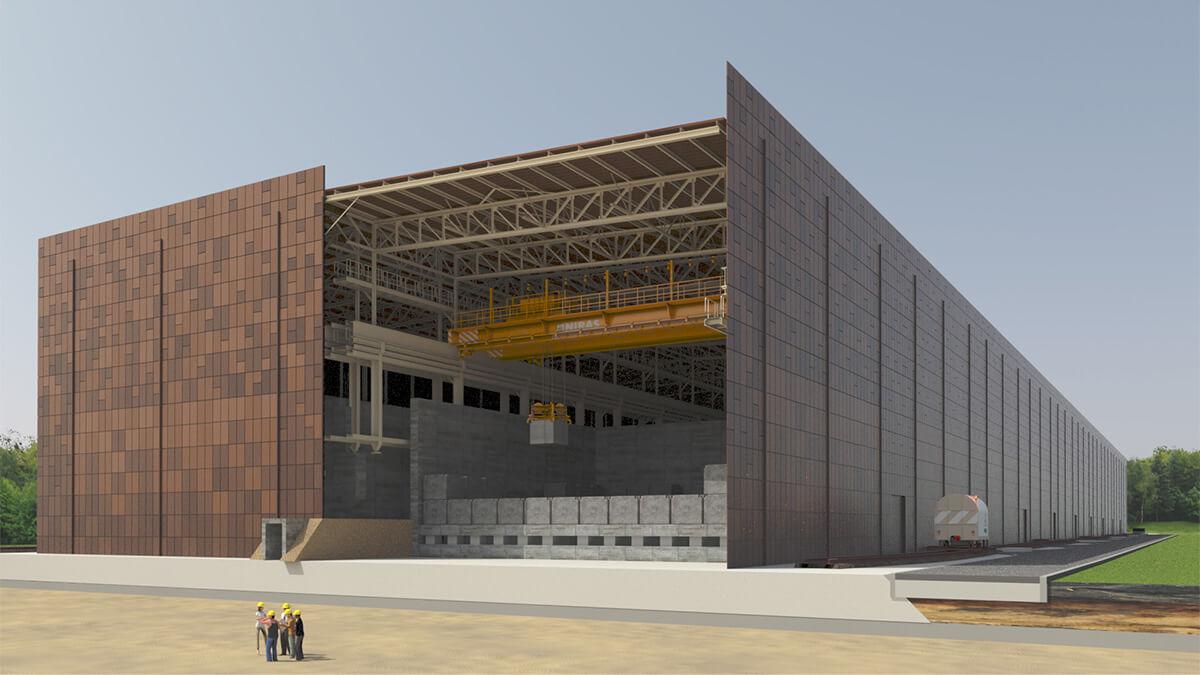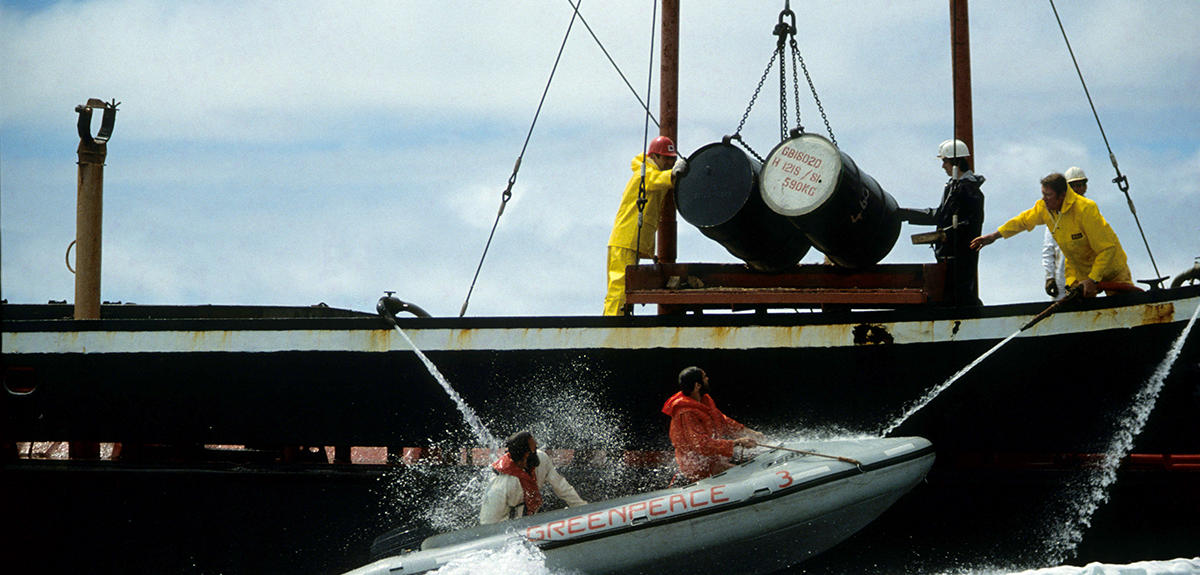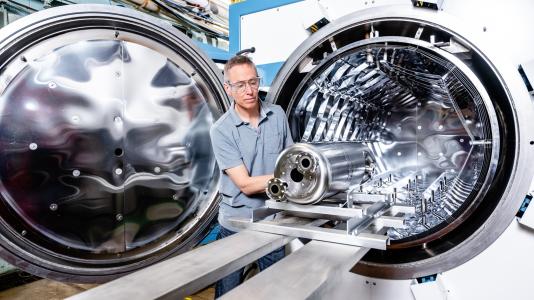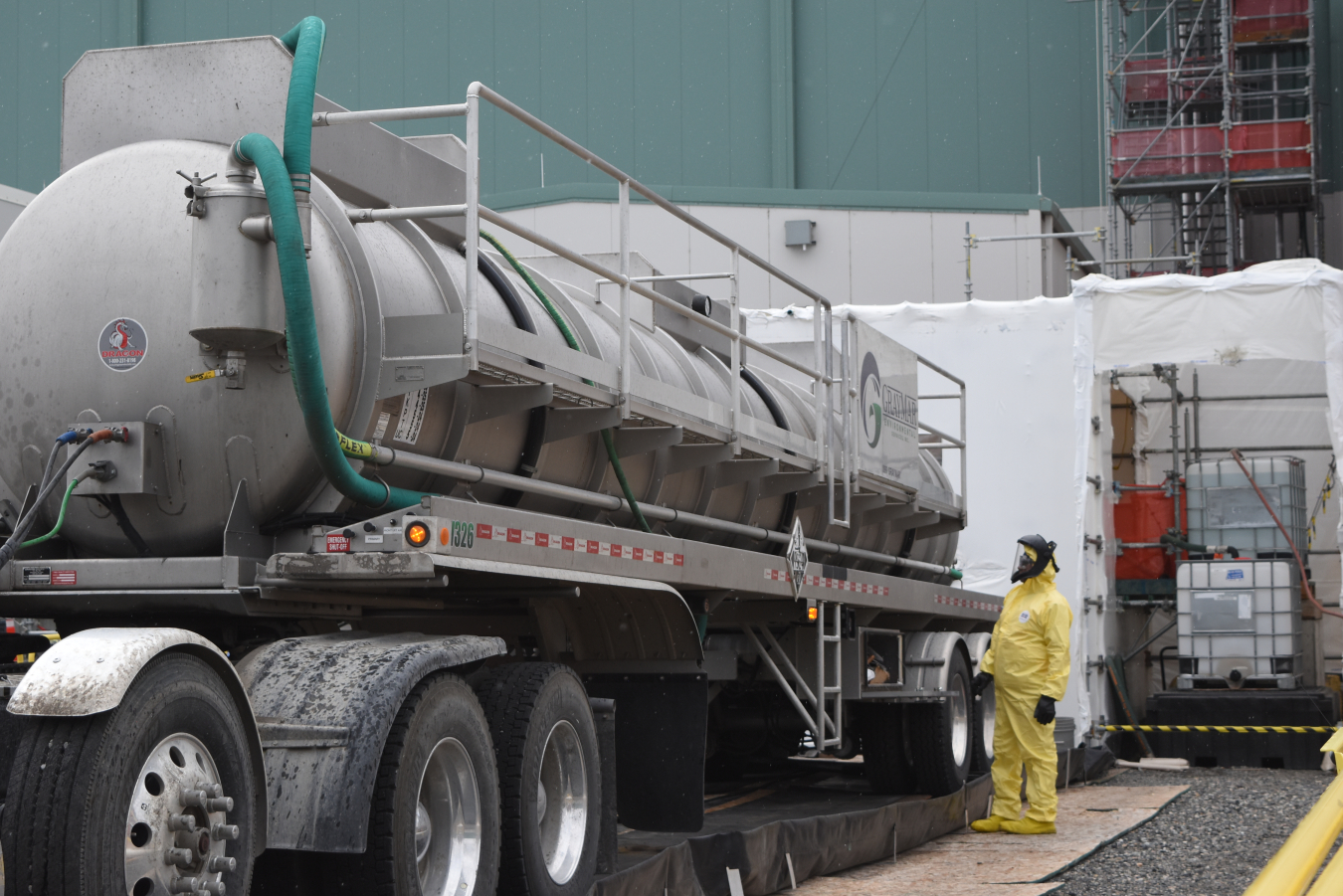Argonne’s Peter Tkac (left) and David Bettinardi analyze results from lab experiments designed to isolate desirable products from spent nuclear fuel. (Photo: ANL)
The Department of Energy’s Argonne National Laboratory will collaborate with Wisconsin-based fusion technology company Shine to design new chemical processes for separating valuable materials from used nuclear fuel.
The DOE and liquid waste contractor Savannah River Mission Completion completed waste removal at the H Tank Farm at the Savannah River Site. (Photo: DOE)
The Department of Energy announced that waste from two more tanks at its Savannah River Site has been removed ahead of schedule. The tanks—numbers 11 and 15—are the fourth and fifth waste containers in 12 months to meet the milestone of preliminary cease waste removal (PCWR) regulatory approval, 7 and 19 months ahead of schedule, respectively, according to the DOE.
A rendering of Switzerland’s proposed deep geologic repository. (Image: Nagra)
Nagra, Switzerland’s national cooperative for the disposal of radioactive waste, has published its general license applications for a deep geologic repository and separate spent fuel encapsulation plant, making the documents publicly available on a digital platform.
Early construction work on the Forsmark repository includes an access tunnel, three vertical shafts for ventilation and a lift, a central area and main tunnels, and transport tunnels to the first repository areas. (Image: SKB)
The Swedish Nuclear Fuel and Waste Management Company (Svensk Kärnbränslehantering AB, or SKB) has signed a collaboration agreement with the multinational construction company Implenia to build the first underground section of a deep repository for radioactive waste near Sweden’s Forsmark nuclear power plant.
Before and after demolition: (1) Workers take the “first bite” during the start of the Main Plant Process Building demolition in 2022. (2) The Fuel Receiving and Storage Facility is now visible from this vantage point following the completion of the building demolition this month. Workers have begun groundwork to install a protective cover over the Main Plant footprint. (Image: DOE)
The Department of Energy’s Office of Environmental Management and its cleanup contractor CH2M Hill BWXT West Valley (CHBWV) completed the on-time removal of the Main Plant Process Building at the West Valley Demonstration Project (WVDP) in New York. Located 35 miles south of Buffalo, the 150-acre WVDP site is home to the only commercial spent nuclear fuel reprocessing facility to operate in the United States.
Hanford contractor teams rehearse procedures for the first transfer of waste from one of the site’s underground tanks to the WTP later this summer. (Photo: DOE)
The Department of Energy’s Office of Environmental Management said that crews at its Hanford Site in Washington state are preparing for the site’s first-ever transfer of radioactive waste from one of its large underground tanks, Tank AP-106, to the Waste Treatment and Immobilization Plant (WTP).
Unterweser’s four steam generators rest on cradles at the plant before being shipped off-site. (Photo: PreussenElektra)
All four steam generators at Germany’s Unterweser nuclear power plant have been removed from the reactor building, plant owner PreussenElektra has announced. The single-unit pressurized water reactor was shut down in 2011 as part of Germany’s decision to phase out nuclear energy. Decommissioning and dismantlement of the reactor began soon after PreussenElektra was granted a permit for the work in February 2018.
Belgium will construct a surface disposal facility for low- and intermediate-level short-lived waste in Dessel. (Image: ONDRAF/NIRAS)
Brussels-based construction group Besix announced that is has been chosen by the Belgian agency for radioactive waste management ONDRAF/NIRAS for construction of the country’s surface disposal facility for low- and intermediate-level short-lived nuclear waste in Dessel.
Greenpeace protest the dumping of barrels in the early 1980s. (Photo: Greenpeace/Pierre Gleizes)
A scientific mission led by the French National Centre for Scientific Research (CNRS) set sail this past weekend in the Northeast Atlantic to investigate the long-term impacts of radioactive waste dumped at sea between the 1950s and 1990s.
Hanford’s 324 Building, circa 2015. (Photo: DOE)
Working with the Environmental Protection Agency, the Department of Energy has revised its planned approach to remediating contaminated soil underneath the Chemical Materials Engineering Laboratory (commonly known as the 324 Building) at the Hanford Site in Washington state. The soil, which has been designated the 300-296 waste site, became contaminated as the result of a spill of highly radioactive material in the mid-1980s.
Solomon Bairai of Navarro-ATL prepares a Twister Stir Bar sample for analysis at the Hanford Site's 222-S Laboratory. (Photo: DOE)
A new method has received Washington state’s approval for use at the 222-S Laboratory at the Department of Energy’s Hanford Site, improving how experts analyze tank waste and providing more precise data to support safe and efficient cleanup.
Argonne physicist Michael Kelly loads a superconducting cavity into a large furnace. (Photo: ANL)
Argonne National Laboratory said it has secured just over $10 million from the Department of Energy’s Advanced Research Projects Agency–Energy (ARPA-E) for two research projects investigating the transmutation of spent nuclear fuel into less radioactive substances.
The NWMO has launched a two-year engagement process as it begins plans for a second deep geological repository to manage radioactive waste in Canada. (Photo: NWMO)
The Nuclear Waste Management Organization, which is mandated by law to develop an approach for the long-term care of Canada’s spent nuclear fuel, has begun collecting feedback from Canadians and Indigenous people to help refine its process for selecting a second deep geologic repository site.
The USS Enterprise is to be dismantled in Mobile, Ala.
The U.S. Department of Defense has awarded NorthStar Group Services subsidiary NorthStar Maritime Dismantlement Services a firm-fixed-price contract worth $536,749,731 for the dismantling, recycling, and disposal of the historic USS Enterprise (now also known as the ex-Enterprise), the world’s first nuclear-powered aircraft carrier. The work will be performed in Mobile, Ala., and is expected to be completed by November 2029.
Fuel debris sample taken from Fukushima-2. (Photo: TEPCO)
Tokyo Electric Power Company has released the results of its initial analysis of a sample of nuclear fuel debris from Unit 2 of Japan’s damaged Fukushima Daiichi nuclear power plant. The sample, which measured around 5mm by 4mm and totaled 0.187 grams, was taken from the floor of the reactor pedestal during a second trial removal of fuel debris conducted in April.
Cleanup crews successfully removed the defueled reactor vessel from the Submarine 1st Generation Westinghouse naval nuclear propulsion prototype reactor plant. (Photo: DOE)
A milestone was reached by Idaho Cleanup Project crews in the deactivation and demolition of the defueled Submarine 1st Generation Westinghouse (S1W) naval nuclear propulsion prototype reactor plant, which had once served as a training ground for about 14,000 U.S. Navy submariners and plant operators.
Workers offload nitrogen into the LAW Facility at Hanford’s Waste Treatment and Immobilization Plant. The nitrogen, mixed with other materials, will simulate tank waste as the facility prepares for waste operations later this year. (Photo: DOE)
The Department of Energy’s Office of Environmental Management announced that it has introduced waste simulant chemicals to the Hanford Site’s Waste Treatment and Immobilization Plant (WTP) as part of the cold commissioning testing of the plant’s Low-Activity Waste Facility.
